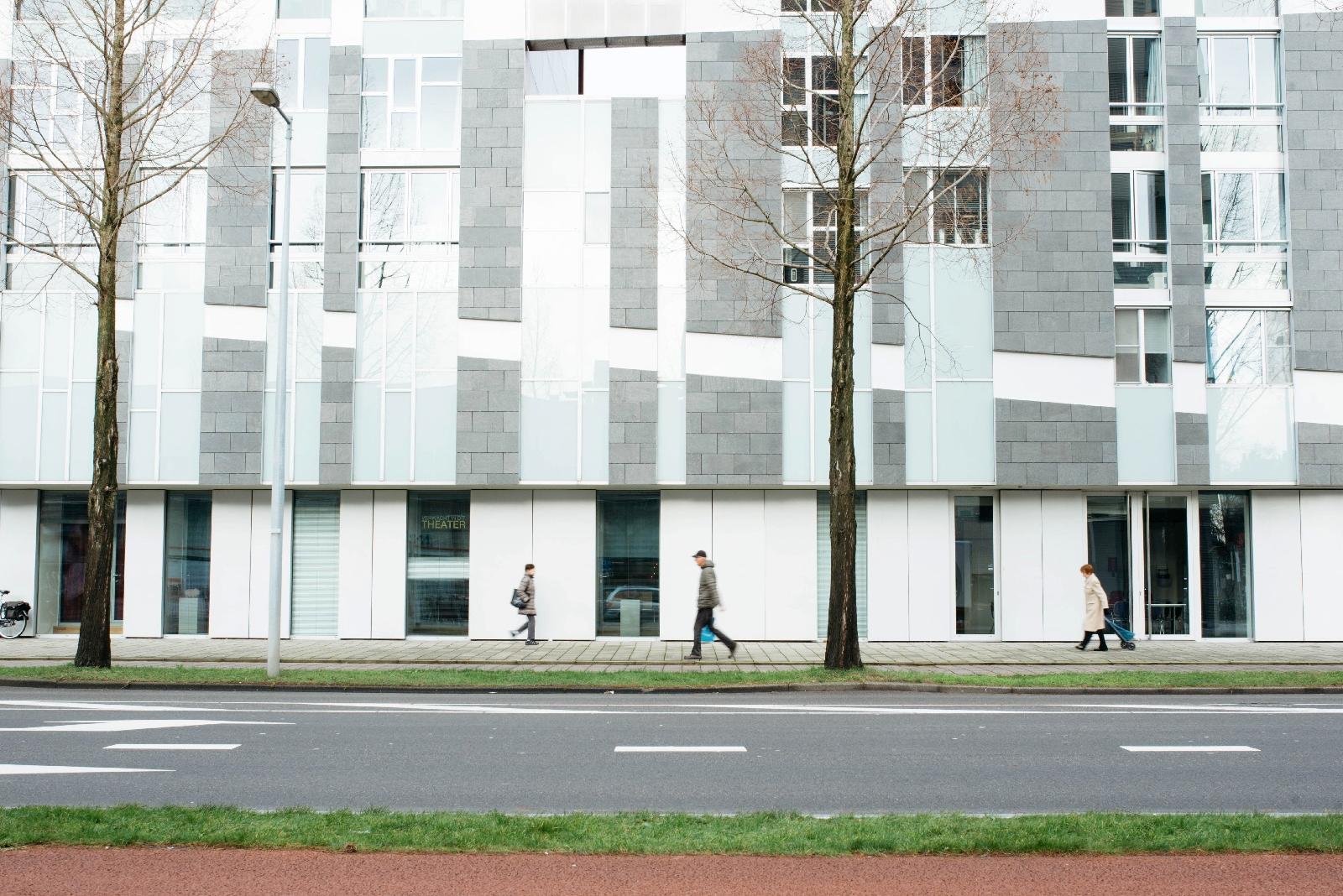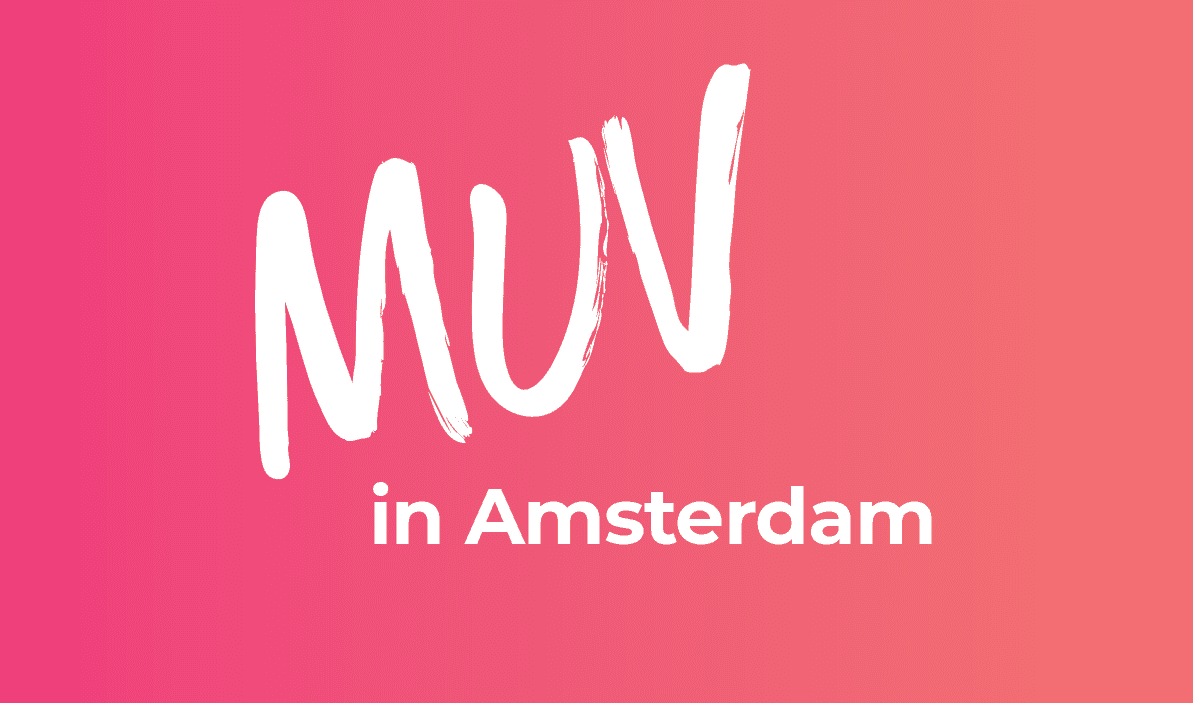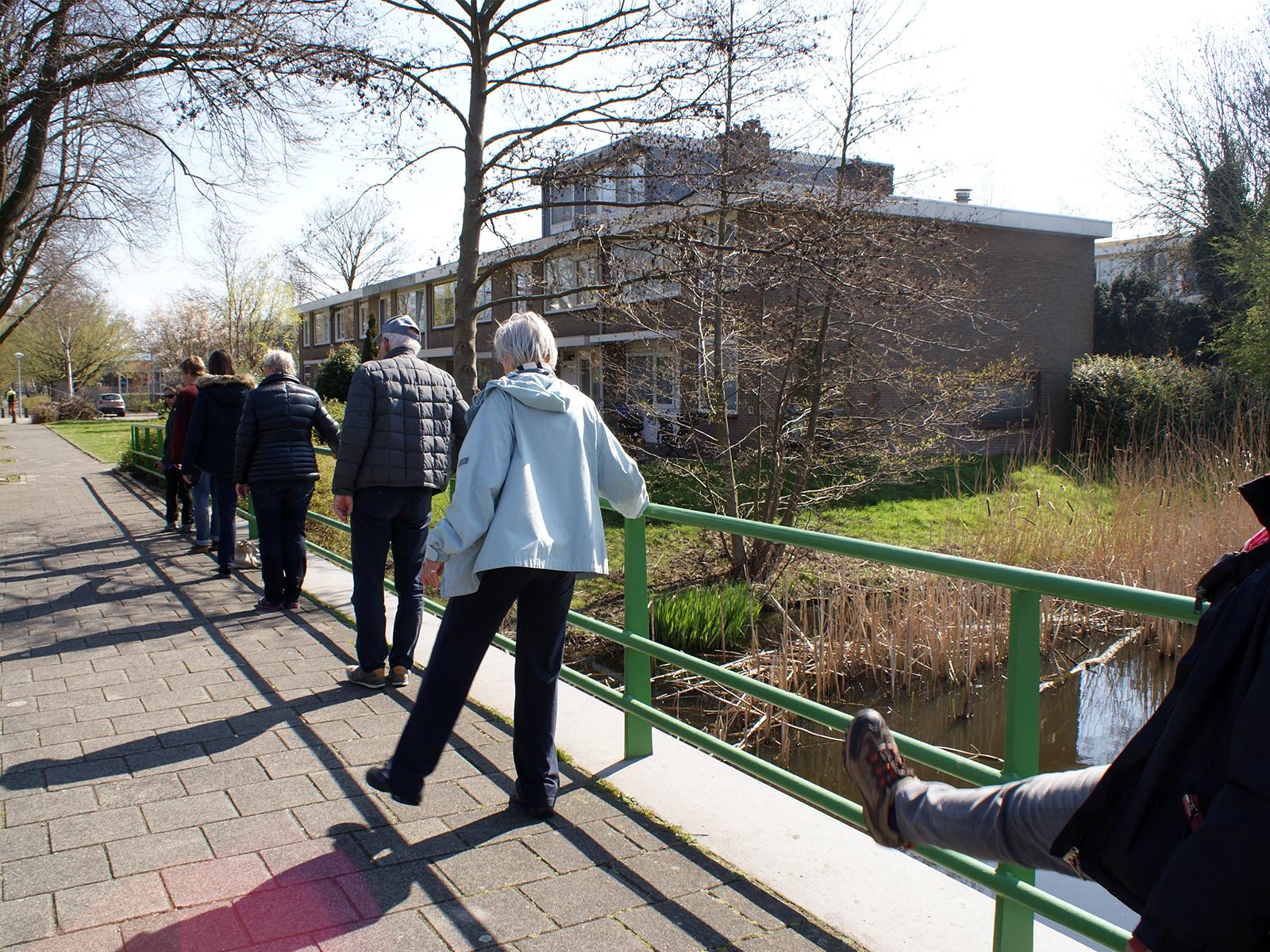For the special theme broadcast 'Game of Phones', the Dutch VPRO published an article in their magazine about the MUV pilot project in Amsterdam Buitenveldert, for which they interviewed concept developer Judith Veenkamp at Waag. Below is a translation of the interview.
A special app with game elements should stimulate older residents of the Buitenveldert neighbourhood in Amsterdam to make more sustainable transport choices.
'The nice thing about getting old is that you see so much change,' says Cisca Griffioen (74). 'When the first computer came, I thought: will I still learn that? Now I can no longer imagine life without the internet.' Griffioen participates in the 'Spaar de Buurt' pilot project in the Amsterdam district Buitenveldert. Waag, which explores the social and cultural impact of new technologies, is developing an app together with the residents to improve mobility in the neighbourhood.
Concept developer Judith Veenkamp (29) explains: 'Spaar de Buurt is part of a large, multi-year European project, Mobility Urban Values (MUV). This is about how you can stimulate sustainable transport choices with people in the city with technological interventions and gamification. Cities are getting fuller, so it's important to keep them livable. You have to be able to get from A to B easily without being in the smog and in traffic jams. This mobility issue is being elaborated in six European pilot cities, all with a different context. We work together with the Southern district, near Buitenveldert, an area where many elderly people live. In the end, an app will be developed together with the local residents. 'It will be a general app for the whole of Europe, with neighbourhood-specific elements. You indicate when you move. Then the app makes an estimate of how you travel: on foot, by car or public transport. You can earn points for sustainable transport choices. These can be exchanged with local entrepreneurs, but it was a wish of the Buitenveldert seniors that the points also add something to the neighbourhood, such as benches or the maintenance of parks. We want the app to connect with the perception of the elderly, and that they also derive value from it.'
Mobility
Four workshops were organized at the beginning of this year. In it local residents were able to express their needs, they invented creative solutions for bottlenecks in the neighbourhood and made a first set-up for the app. 'Those meetings in themselves already provided for a need,' Veenkamp remarked. 'The local residents really enjoyed coming together and working together on something. At all workshops it turned out that they would like a lot of social contact. We also found out that mobility for the elderly is more complicated than for other groups in society. Mobility is an important way to remain socially connected and to participate in society. And by moving, people stay healthy for longer. But elderly people sometimes find it difficult to cycle in the hustle and bustle, encounter obstacles with the walker, suffer from loose paving stones or poorly lit roads.'
Local resident Griffioen found the meetings 'very nice', she says. 'They have made great efforts to get us to work. Many great ideas came forward to improve social cohesion. At the same time, I think that with such an app you will mainly reach people who are very familiar with technology and who take the initiative to participate in such a project. You will not easily get lonely people and digits.'
'I was worried that people might be held back by the technical story,' says Veenkamp. 'But most modern elderly people have a smartphone and can deal smoothly with apps. The first meetings were not yet about technology, but more about the issues and ideas that the residents had.'
Smart citizens
After the summer, when the first version of the app is ready, it will be tested together with the local residents. 'Then we will also discuss how they feel about being followed by the technology,' says Veenkamp. 'We want to talk about the idea that they are relinquishing their data and being sent in their choices by an app. At Waag we find it important to critically question the technology. Users also need to have access to the data themselves. In addition to the app, monitoring stations will also be installed in the neighbourhood: boxes that collect data with sensors. We also design these in consultation with the residents. For example, they can measure air pollution, movement, lighting, noise pollution or crowds. They map out the neighborhood and complete the information from the app.'
In this way the inhabitants of Buitenveldert will hopefully become smart citizens. 'The overarching goal is to make people aware of their transport choices,' says concept developer Veenkamp. 'In addition, we find it important that the users of the technology also have a grip on it, and can do something with the information they generate themselves. We hope that they will be strengthened in the substantiation of what they want with the neighbourhood, and that the technology will help them.'
Mrs. Griffioen is a very involved inhabitant of Buitenveldert, the neighborhood where she has lived for fifty years. 'I am the chairman of a tenants association and of residents' platform Zuidas and involved in Ouderenvriendelijk Buitenveldert. There is a lot organised in the neighbourhood, it seems like everyone wants something with this neighbourhood. So she does not need an extra app to get out of the door anymore. 'I am elderly, but I have a very busy life, so I do not necessarily need extra distraction.' The most important, but also the most difficult, is to reach the more isolated residents as well. 'For that, the app must be very simple', in any case, she thinks. 'It must be easy to operate by everyone and in small steps. It is important to keep people mobile, but public transport is not too good here. So all the bits that can contribute to this will help.'


